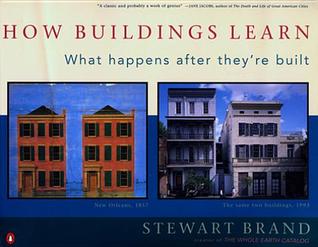More on this book
Community
Kindle Notes & Highlights
Initial conservatism would be the natural result of a scenario approach to design,
Revisiting and changing design decisions must not be allowed to stop or to confuse the drive toward completion.
there needs to be more money than usual spent on the basic Structure, less on finishing, and more on perpetual adjustment and maintenance.
Sixty percent of the final cost of a mortgaged building disappears as interest to the bank instead of going into the building.
the mortgage temptation—buy too much now, pay too much later.
The temptation to customize a building around a new technology is always enormous, and it is nearly always unnecessary.
Try things first. Feel your way.
beware: in the real world “temporary” is permanent most of the time. If the cheap trial worked, it will be left alone, no matter how funky it is. If it failed, it’s embarrassing to fix. Life rushes on to more pressing or interesting problems.
Some say you should flee a building while it is being finished or remodeled. I recommend occupying it. Bad as the inconvenience and aggravation get, it’s worthwhile for the fine-tuning that only presence at the worksite affords.
every building has some crucial parts that have to be done carefully for it to age well.
wabi sabi—“the recognition that in a beautiful thing there is always some part which is lovingly and carefully done, and some parts which are very roughly done, because the compensation between the two is necessary in a real thing.”
“Finishing is never finished,” but at some point you have to just stop, let the builders go away, and start living in the place.
It will take a year to work out just the major bugs. In the first year of the Media Lab building at MIT, the elevator caught fire, the revolving door broke weekly, all the doorknobs in the building failed and had to be replaced, the automatic door closers were stronger than people and had to be adjusted, and an untraceable stench of something horribly dead filled the public lecture hall for months. This is normal.
“After seeing this for a while and seeing that it was fundamental, we hired someone just to handle those problems—a full-time handyman for our clients.
We don’t bill for much of his time. We believe it’s our duty in building a building that it should work well for twenty-five or fifty years. We’re trying to make a building that doesn’t need his time, and whatever time of his it needs is our responsibility.
“We get to see what works in our buildings and what doesn’t work.
Besides spare parts, a new building needs a complete and accurate record of itself.
In a healthy building, maintenance, correction of faults, and improvements all blend together.
It’s a waste to do anything for just one reason.
Learning in a building, then, is a simultaneous process of constant self-healing and of arranging for greater possibilities.
Nuances are as important as systemic problems.
Fine-tuning is what turns a building from a nuisance into a joy.
The point is to make adjustments to a building in a way that is always future-responsible—open to the emerging whole, hastening a richly mature intricacy. The process embraces error; it is eager to find things that don’t work and to try things that might not work. By failing small, early, and often, it can succeed long and large. And it turns occupants into active learners and shapers rather than passive victims.
That goes better if the place is neither owned nor maintained by remote antagonists, because they distance the building from its users. What makes a building learn is its physical connection to the people within.
Finally, an adapted state is not an end state. A successful building has to be periodically challenged and refreshed, or it will turn into a beautiful corpse.
Get down to cases—what exactly is the performance record of buildings that won architectural awards?
there were two types of people in the world—those who deal with something new by really looking at it, devoid of preconception, versus those who prefer to form hypotheses first and then study the thing to see which ideas were right. Both are honorable and productive. With “Look first,” new perception changes understanding. With “Think first,” new understanding changes perception.
Still, theories mislead as much as they lead.
We measure what is easy to measure and ignore what is difficult.
There’s no reason to rely only on professionals.


